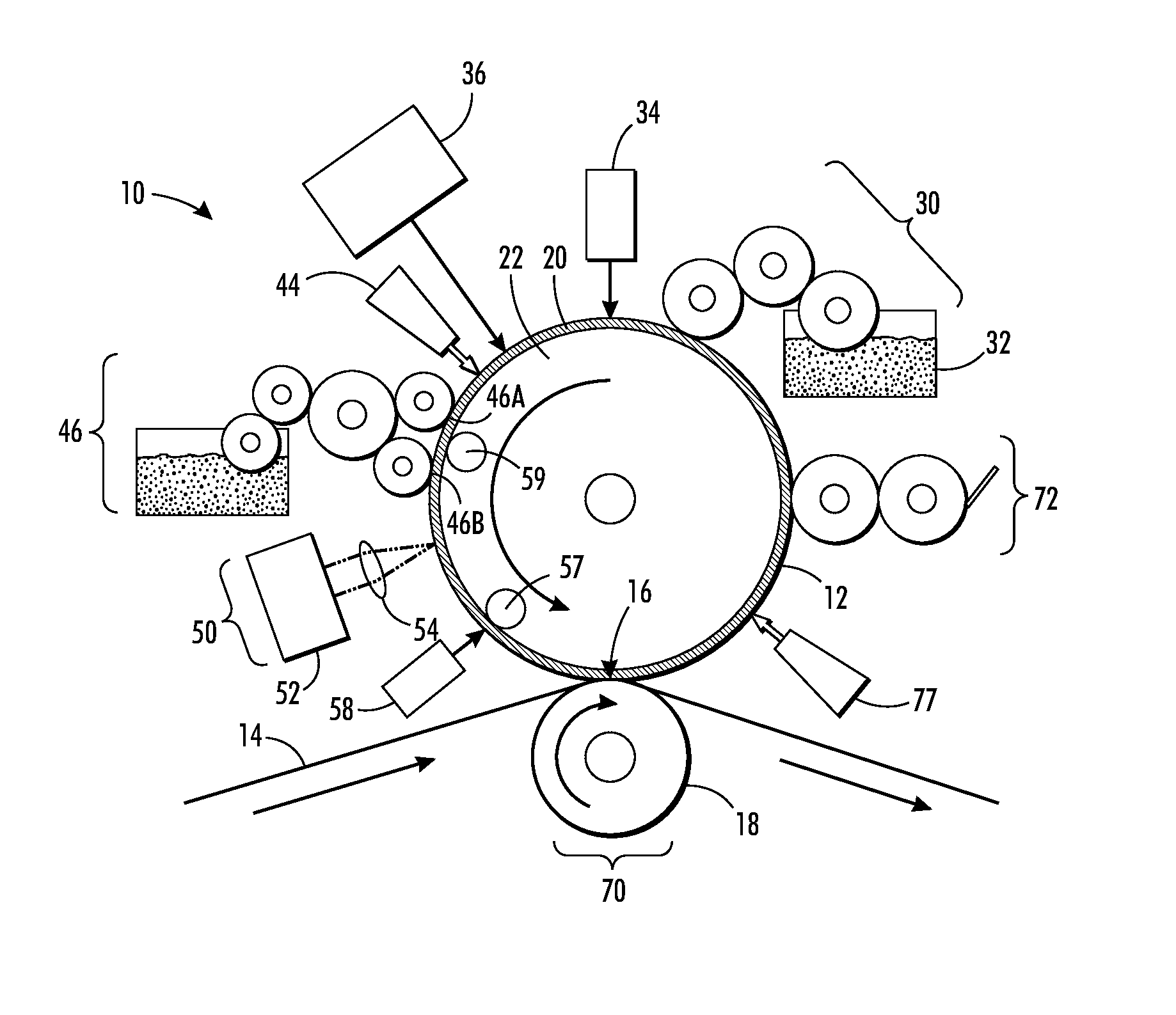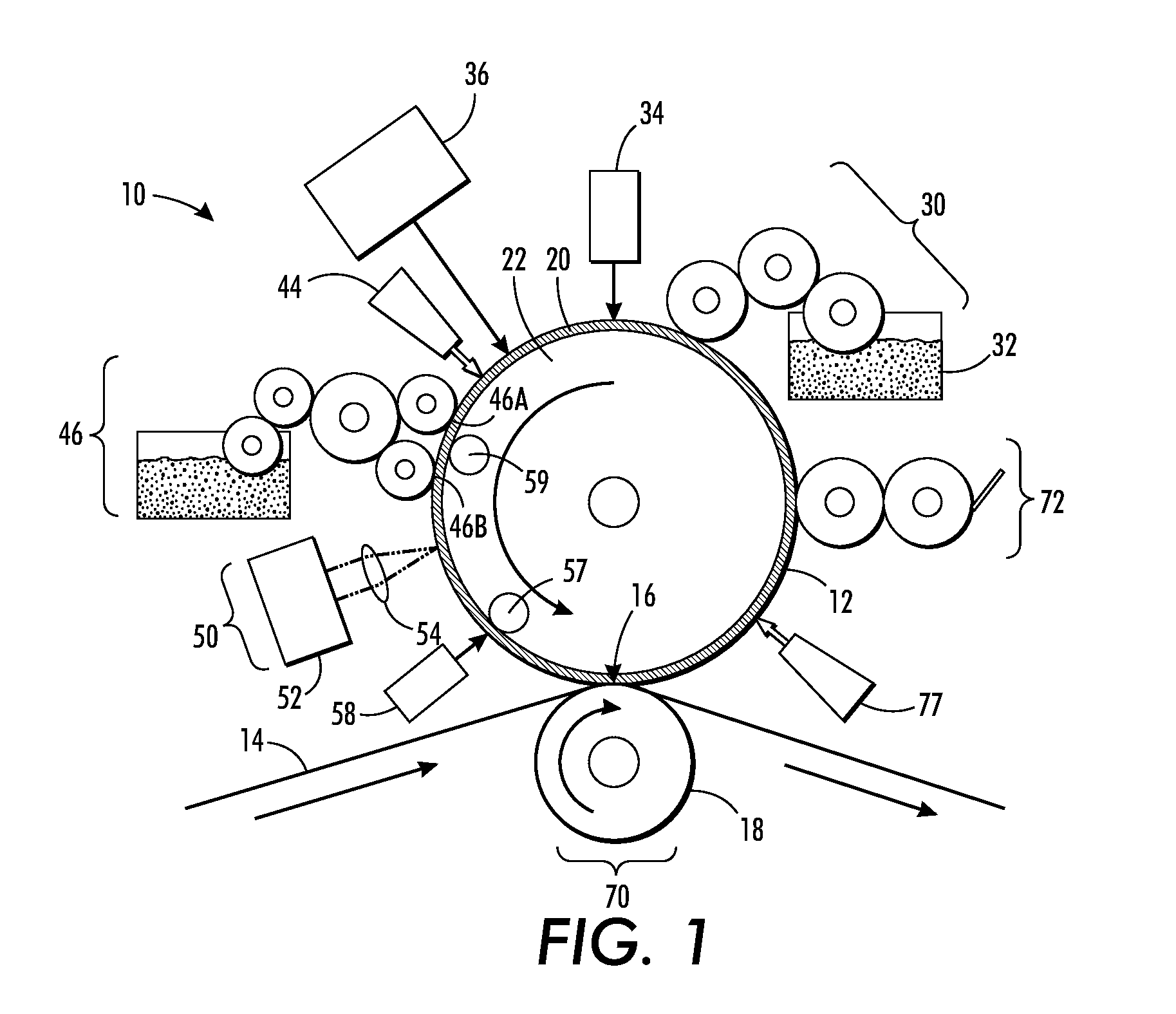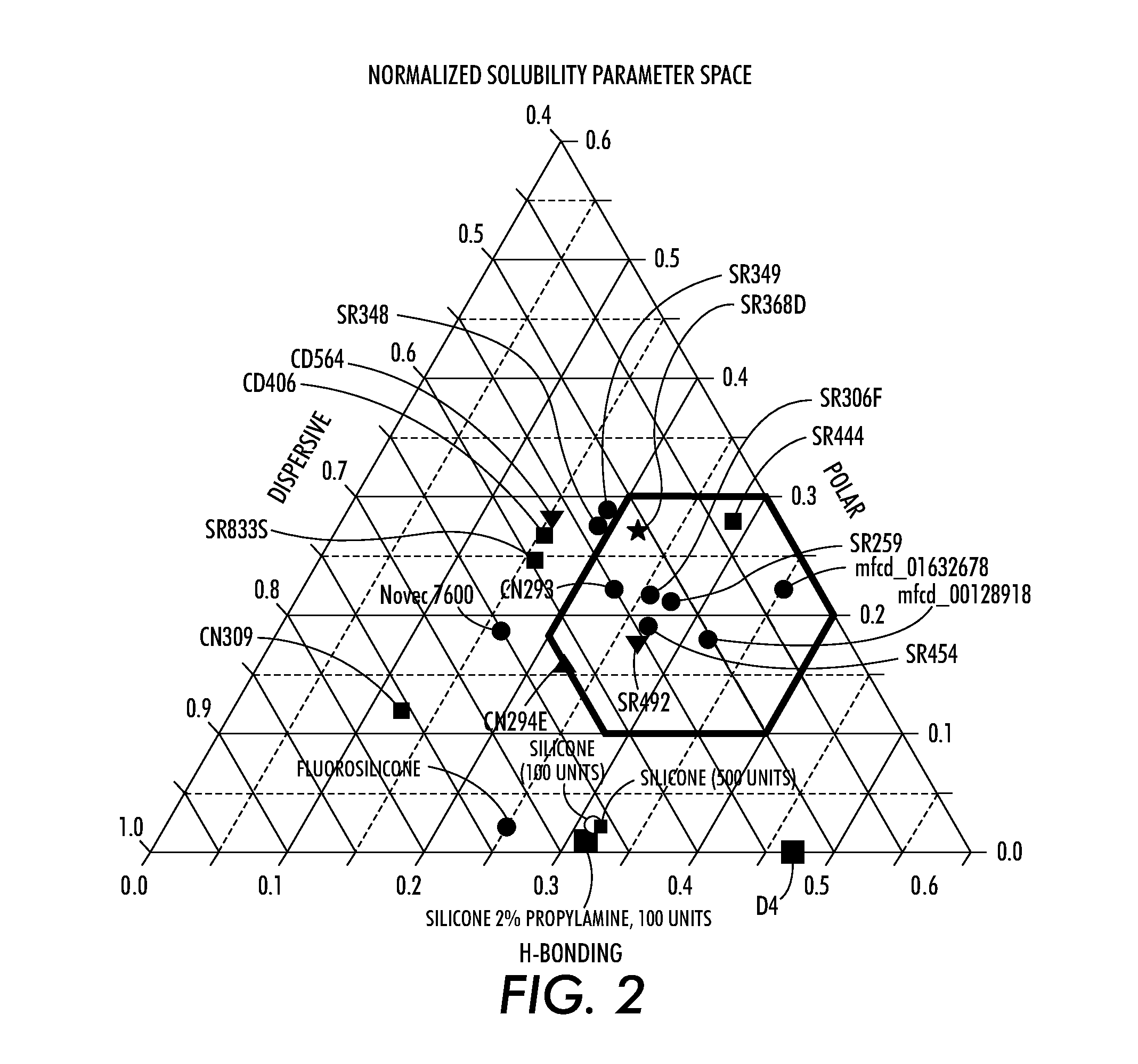Ink for digital offset printing applications
a technology of offset printing and cylinders, applied in the direction of printing, coatings, and cylinders, can solve the problems of not being able to accommodate true high-speed variable data printing, not being able to create and print new patterns from one page to the next, and the cost of permanently patterned imaging plates or cylinders is amortized over the number of copies
- Summary
- Abstract
- Description
- Claims
- Application Information
AI Technical Summary
Benefits of technology
Problems solved by technology
Method used
Image
Examples
examples
[0109]A description of the materials used in the examples is provided here in Table 1.
TABLE 1MaterialDescriptionSupplierIrgalitePigmentCibaBlue GLOCN309Oligomeric acrylate ester derived from anSartomeraliphatic hydrophobic backboneCN293Hexafunctional acrylated polyester oligomerSartomerCN294ETetrafunctional acrylated polyester oligomerSartomerSR259Polyethylene glycol (200) diacrylate monomerSartomerSolspersePolymeric dispersantLubrizol39000Claytone HYRheological additiveSouthernClayIrgacure 184PhotoinitiatorCibaIrgacure 819PhotoinitiatorCibaIrgastabStabilizerCibaUV10BYK 3500Surface additiveBYKSR306FTripropylene glycol diacrylate monomerSartomer
[0110]Initially, the Hildebrand solubility parameter approach was used to identify curable monomers and oligomers that were most likely to be compatible with the digital offset printing systems contemplated herein. Screening of suitable ink ingredients was also conducted by measuring the degree of mixability between the ink ingredient and the ...
PUM
| Property | Measurement | Unit |
|---|---|---|
| wt % | aaaaa | aaaaa |
| wt % | aaaaa | aaaaa |
| wt % | aaaaa | aaaaa |
Abstract
Description
Claims
Application Information
 Login to View More
Login to View More - R&D
- Intellectual Property
- Life Sciences
- Materials
- Tech Scout
- Unparalleled Data Quality
- Higher Quality Content
- 60% Fewer Hallucinations
Browse by: Latest US Patents, China's latest patents, Technical Efficacy Thesaurus, Application Domain, Technology Topic, Popular Technical Reports.
© 2025 PatSnap. All rights reserved.Legal|Privacy policy|Modern Slavery Act Transparency Statement|Sitemap|About US| Contact US: help@patsnap.com



